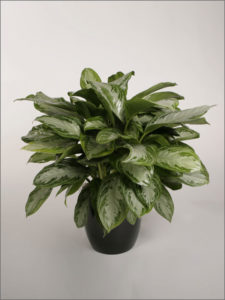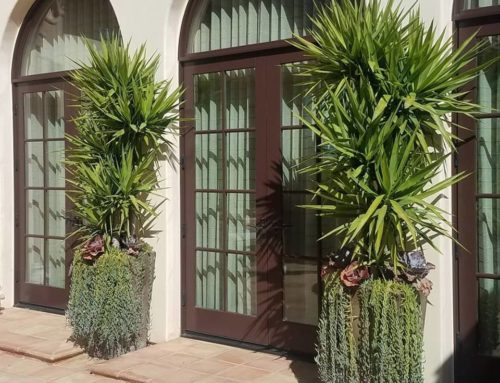 Aglaonemas are one of the most frequently used plants in interiorscapes. Also called Chinese Evergreens, they are used as tabletop plants, stand-alone floor plants and as groundcovers in beds. They endure chronic over- and under-watering. It’s hard to envision an interiorscape without at least one or two aglos so let’s learn all about Aglaonemas!
Aglaonemas are one of the most frequently used plants in interiorscapes. Also called Chinese Evergreens, they are used as tabletop plants, stand-alone floor plants and as groundcovers in beds. They endure chronic over- and under-watering. It’s hard to envision an interiorscape without at least one or two aglos so let’s learn all about Aglaonemas!
History
This delightful group of plants is in the Araceae family, making it a close kin to Spathiphyllums and Philodendrons. It’s classified as a rhizomatous herb, slowly spreading. The thickened stems hold elliptical, elongated foliage in many shades of green. Many have variegation along the major veins. As the plant matures, the weight of the foliage causes the stem to sprawl which in nature is a secondary way the plant spreads – by rooting along the stem wherever it touches the ground.
Care
Aglos live forever, if cared for properly. Grooming is an important function for aglo care. Take off yellowing leaves on a regular basis. Include removing the petiole with the removal of the leaf. While you are in the pinching mode, remove the flowers and flower buds. This plant is grown for its decorative foliage and you want its energy to go towards growing new leaves rather than to produce a flower. As the plant grows in size it will start to flop open.
Some people like to add rooting hormone to the tip to encourage it to root. When you have unrooted cuttings in your plant be sure to keep the plant a bit wetter than normal and irrigate near these cuttings. Of special note, no aglo should ever need a stake. Even those in very low light. If you are feeling the craving to add one, it’s time to prune that plant back.
Sometimes aglos get insects. This will slow them down and make them use less water. The most common pest for aglos is mealybug. They camp out in the soil and in the leaf and flower buds and can be very hard to get rid of. You must be persistent. Spray on a weekly basis with an alcohol, soap and water mixture.
Aglos do not like the cold. Anything under 55 degrees (Farenheit) is too cold for them and they will suffer. Their chilling damage can look like the plant got too dry for the leaves turn an odd shade of yellow. Cold damage is a distinctive wet looking brown/black color.
Want to know more about Aglaonemas? Contact us, the experts! Our technicians know all about Aglaonemas care and love to share their knowledge.





